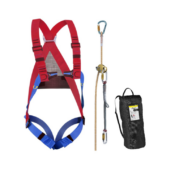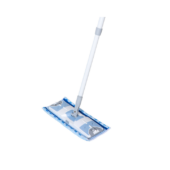Finance and procurement professionals lacked time, resources, and mandate to manage tail spend until recently. Nothing takes longer than counting coins. But as contemporary organisations acquire more indirect products and services, those pennies pile up rapidly. Finance and procurement teams must buy prudently, stabilise cash flow, and account for every cent in preparation of a recession. The tail expenditure comes in. Most companies overlook tail expenditure, which encompasses numerous categories and providers but is very little. Tail spend management is more complicated than traditional approaches due to a large concentration of one-time purchases or high-volume, low-value transactions. This is why many financial teams haven’t prioritised it.
Businesses should treat tail spend as seriously as strategic investment to maximise profits and staff efficiency. Business executives might save 5-15% in this expense segment by paying attention.
How can this happen with many low-value purchases and minimal resources? Strategic changes and the correct instruments will alter everything.
We’ll define tail cost, describe how to manage it, analyse the benefits of efficient management, and review current techniques for streamlining tail waste.
Describing Tail Spend
Tail expenditure is a company’s external expenses not strategically handled by procurement or finance. It usually involves high-volume, low-value or one-time indirect products and services acquisitions.
Tail expenditure, also known as B-material and C-material, accounting for 80% of transactions but just 10%–20% of a company’s overall spend (a Pareto Principle example).
Employees sometimes buy outside of permitted vendor contracts without procurement’s knowledge. Companies are now monitoring renegade or maverick expenditure due to the potential of an economic collapse and inflation.
Tail spend management consolidates, normalises, and eliminates 20% of expense. Tail expenditure management improves operational margins and a company’s bottom line.
Tail spend management may include core cost items or services retained without evaluation or renegotiating the contract. Negative effects may spread across the firm. Large purchases outside of a vendor contract put your firm at risk of non-compliance and fraud.
This is a broad description of tail expenditure, however each company’s purchases will vary. Whatever the situation, uncontrolled regions are missed organisation savings possibilities.
Prime Tail Spend Examples
Procurement specialists must identify tail expenditure to manage it. Examples of everyday tail spend? It can fall under various expense categories and be spread over multiple company operations, such as:
- Shipping—printing and packing
- Marketing—social media and web development
- Business services—IT, HR, etc.
- Office supplies—paper, food, equipment
- Banners, pamphlets, and signs
- Premiums and gifts
- Contractors—Accounting, writing, SEO
Controlling Tail Spend
Controlling tail spend gives you a competitive edge and greater savings potential. If the economy turns bad, a corporation can free up cash and maintain profitability by cutting long-tail expenditures. Teams must determine where to strengthen procurement system rules for cost savings.
Map all non-strategic supplier purchase costs for tail spend management. A firm can better understand expenditures and rationalise its supplier base. Optimising tail spend starts with greater spend visibility.
Unfortunately, procurement agencies often lose track of “indirect spend” transactions.
Maverick Spend Control
Maverick spending involves buying beyond business procurement policies. The firm will also lose pre-negotiated pricing, early-payment incentives, quality standards, and supplier confidence. Maverick spending raises compliance risks and missed opportunities.
What drives erratic spending?
- Lack of spending policy documentation
- Limited self-service and guided purchase tools
- Insufficient training on acceptable purchase practices
- Need for central procurement intake
- Staff believe they identified a superior source.
Examining your company’s maverick spend reveals straightforward cost savings. An extensive examination will reveal compliance concerns, purchase redundancy, and supplier renegotiations.
Internal Process and Policy Organisation
Tail expenditure management is best done by segmenting spend categories by frequency and criticality to direct stakeholders to the right buying channel.
Streamlining the intake-to-procure process and automating low-value goods saves procurement time to combine dispersed spend. They can get better prices and conditions from favoured providers.
Sorting, categorising, and analysing your company’s expenditure data improves purchasing, spend awareness, and decision-making.
A 24/7 third-party sourcing intake management solution may centralise sourcing and acquisition queries. This programme can coordinate sourcing inquiries with the client’s in-house sourcing team or vendor agreements based on expenditure parameters and service criteria.
Using Tail Spend Analysis
Without end-to-end expense visibility, how can you manage a programme? Tail expenditure analysis provides a 360-degree perspective of indicators like:
- Category or supplier count
- On/off-contract expenditure percentage
- Managed spend percentage
- Purchase order coverage
- Purchase price variation
expenditure analytics identifies and finds savings potential from all expenditure data sources by business unit and enterprise.
It also enhances data quality, centralises access, applies standard categorization, and organises data by supplier parent name. It shows what you’re doing properly and what you can improve.
Supplier consolidation
Supplier consolidation is crucial to tail expenditure management. Tail expenditure analysis finds ways to consolidate suppliers and get volume savings for the same products and services.
This also improves productivity since teams can focus on fewer suppliers and better manage their relationships.
Tail expenditure management helps vendor management teams manage supplier onboarding protocols and data. Requestors can be automatically directed to preferred suppliers instead of submitting new vendor requests, saving time and simplifying operations.
A concentrated supply base reduces freight costs. Procurement and accounts payable staff can save large-volume transaction management expenditures.
Fewer vendors also decrease order delays and non-delivery. The narrower the circle, the more likely suppliers will understand your company needs and work harder to retain your higher order volume.
Tail Spend Management Software
A recent survey found that procurement teams who employ tail spend technologies may save 10% annually. Proactive tail expenditure control with sophisticated procurement intake management software gives you an edge. End-users get spend visibility and better purchasing controls. Tail expenditure management is automated by these technologies, saving your organisation time and money.
Well-Managed Tail Spend Benefits
Strategically managing low-value, high-volume spend may save you time and money. Give procurement teams more strategic sourcing options to negotiate cost reductions to consolidate and manage tail expenditure, improving efficiency, risk, and advantages like:
Cost-cutting
Tail expenditure management may save a corporation 10-20% one-time, according to studies. After that, expect 2-5% yearly savings.
Supplier pricing standardisation drives savings beyond consolidation. When stakeholders make rogue purchases, they may buy the same thing from the same provider at different rates. Suppliers can charge 30% more for the same goods.
Improved Supplier Relations
Fragmented, unregulated tail spend affects buyers and suppliers.
If your company sends a lot of orders for things that might be aggregated into a catalogue or blanket purchase order, the supplier pays to process, ship, and charge them.
Streamlining your purchase intake and approval procedure reduces tail expenditure and saves suppliers time storing data such bank account payment details.
This makes your organisation a preferred customer, which can lead to preferential pricing and prioritisation during supply chain interruptions.
Enhanced Efficiency and Productivity
Tail expenditure control reduces rogue outsourcing and boosts efficiency by consolidating suppliers. Cutting the number of vendors procurement works with would save money and let personnel focus on negotiating better contracts. Better catalogue coverage and self-service let non-procurement workers focus on their tasks. The correct technology can automate spend approvals, purchase order production, and invoice processing.
Security and Compliance
Tail expenditure management standardisation improves compliance and reduces corporate and vendor cyber security threats. Intake-to-procure solutions speed vendor onboarding and reduce regulatory and cyber breach risks by eliminating rogue supplier selection and onboarding. It also makes procurement more transparent by showing stakeholders request status and approval criteria.
Tail expenditure management systems track and regulate transactions. Issues may be detected and fixed in real time before orders are submitted to suppliers. Business can avoid maverick spending and gain precise spend behaviour data. You can guarantee staff follow buying regulations and maintain spend on-contract this way.
Role-based benefits in Tail Spend Management
For the CEO
Stakeholders Chief leaders prioritise corporate growth and investor profitability. CEOs can use income from cost reduction possibilities to fund growth projects through tail expenditure management.
For COO
Unmanaged tail spend lowers staff productivity, a major problem for COOs. Employees waste time identifying, negotiating, and onboarding vendors. The procurement and finance teams react to rogue expenditure requests and non-PO-back bills. Maverick vendor selection may also damage a brand’s reputation by compromising product quality.
All these frivolous purchases might cost organisations a lot. Chasing tail expenditure transactions can reduce buyer and requester productivity by 40%, according to research.
It also lowers morale because most workers prefer to work on their main duties. As COOs focus on employee productivity, engagement, and pleasure to retain workers in a tough labour market, simplifying and automating tail spend transactions can assist.
For CFO
CFOs in regulated industries face regulatory concerns without adequate tail expenditure control. Regulatory and cyber-security compliance might be difficult for businesses with many unmanaged vendors. Remember that 60% of data breaches involve third-party suppliers, therefore strict new vendor clearance processes are essential to prevent hefty fines and brand harm.
For the CPO
Chief procurement officers can negotiate pricing, conditions, and other supplier issues when tail expenditure is handled. Instead of the procurement department’s lower pricing, organisations pay more for tiny items obtained rapidly. Pre-negotiated costs reduce procurement indirect expense significantly.
Optimising tail cost management boosts procurement productivity. CPOs are using intake-to-procure solutions to streamline the purchase process and reduce time spent on purchase requests instead of watching their reports react to emails, texts, and calls. This time saved lets procurement staff focus on strategic sourcing agreements, saving the CPO money and visibility.
Company-wide
So value expenditure comes in. Small suppliers provide innovation and greater flexibility than bigger ones. They can adapt and pivot faster, implementing new ideas faster. A tail spend SME might have amazing views if the connection is cultivated.
Tail expenditure management strengthens business connections and helps the whole firm. It also provides several chances for socially responsible buying, such as minority-owned suppliers.

















